Explore web search results related to this domain and discover relevant information.
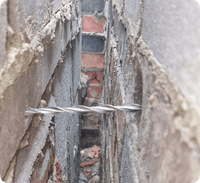
Replace failing wall ties with stainless steel retrofit ties for long-lasting cavity wall reinforcement.
Target Fixings uses over 20 years of specialised experience in diagnosing and resolving wall tie failure. Our repair techniques minimise disruption to your home and restore its strength discreetly and effectively.Restore the structural integrity of your property with our expert wall tie replacement service, utilizing our high-quality masonry reinforcement materials for a durable, long-lasting solution. Request a free, no-obligation quote today and discover how we can secure your home’s future. Contact us ... For damaged or failed wall ties, our Dri Flex system provides a precise and lasting structural repair by replacing them with new.Wall ties are small but essential components of cavity walls. When they fail, they can cause serious cracking, bulging, or leaning.This process directly addresses cavity wall tie failure and prevents further wall tie corrosion that can lead to horizontal cracks in mortar and cracks in brick walls.
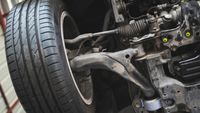
Rough roads and big potholes can do a number on your tie rods over the years, and these are the symptoms tie rods can show when they start to fail.
A smooth and flawless steering feel devoid of noises and clunks are the hallmarks of a damage-free suspension and steering system, particularly the tie rods. When they fail, the symptoms could range from mild to wild, like losing steering control while driving.Unless your vehicle was in an accident or went through a really nasty pothole, the tie rods will emit telltale symptoms of damage before failing. The first symptom is excessive freeplay in the steering wheel, particularly when turning. If you feel a noticeable lag from the front wheels to move when turning the steering wheel, that could also point to damaged tie rods.Meanwhile, bad tie rods could result in unnecessary vibrations as well. If you feel the steering wheel shake or vibrate when accelerating or turning a corner, it's a good idea to check the tie rods for damage or excessive play. Uneven tire wear could also point to failing tie rods.Excessive or uneven tire wear usually means the wheel alignment is out of whack, but if your car has lousy tie rods, it could alter the wheel alignment when driving and lead to tire wear. That also means you may need to buy new tires sooner rather than later. ... Finally, clunking noises in the front of the undercarriage while driving, or creaking noises when going over humps, bumps, or road undulations are symptoms of failing tie rods.

Acting as concealed connectors between the inner and outer walls, they help ensure the property remains strong and weather-resistant. When these ties fail, the consequences can be serious, potentially leading to cracking brickwork, instability, and increased vulnerability to moisture penetration.
Historically, many wall ties were made from mild steel, which, although strong at the time, is prone to corrosion. Over decades, exposure to moisture — especially in coastal areas or properties with poor maintenance — can cause these ties to rust, expand, and eventually fail.For homeowners, property buyers, and industry professionals, understanding the causes, signs, and detection methods for cavity wall tie failure is essential.Wall tie failure is often invisible until the damage becomes advanced.While these signs are not always definitive proof of wall tie failure, they warrant professional investigation.
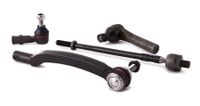
Steering tie rods are a part that’s pretty much universally shared by every car in existence, stretching back for nearly a century. Not much has changed in their function or design during these years, nor has much changed when one of them fails.
Tie rod ends are critical steering and suspension components. Learn what they do for your car and how to tell if they're not working right.Notice clunking sounds or poor handling while driving? Discover the top symptoms of a failing control arm, what causes these problems, and how to fix them.What do tie rods do? A tie rod is a threaded steel or cast iron tube, with a small pivoting ball joint on the end. Its purpose is to connect the steering gear mechanism (either a gear box or rack and pinion) outward to the wheels.These two tie rods are usually connected with an adjusting sleeve, or the inner and outer simply connect, with the inner being the adjusting device. This allows adjustment and precise alignment of the two wheels/tires.
Besides normal wear and tear, tie rods can fail due to rough road conditions and insufficient lubrication.
Since tie rods are used whenever the vehicle is steered, they are subject to wear and damage. While a tie rod can fail due to normal wear and tear, driving hazards like potholes and accidents can also damage a tie rod. If a tie rod fails, it can result in a range of effects from premature tire wear to loss of steering control.Tie rods ensure that the vehicle tracks straight and assist in steering. A failing tie rod can cause the front end to come out of alignment.While tie rods are designed to last for many years, they can fail.Besides normal wear and tear, tie rods can fail due to rough road conditions and insufficient lubrication.
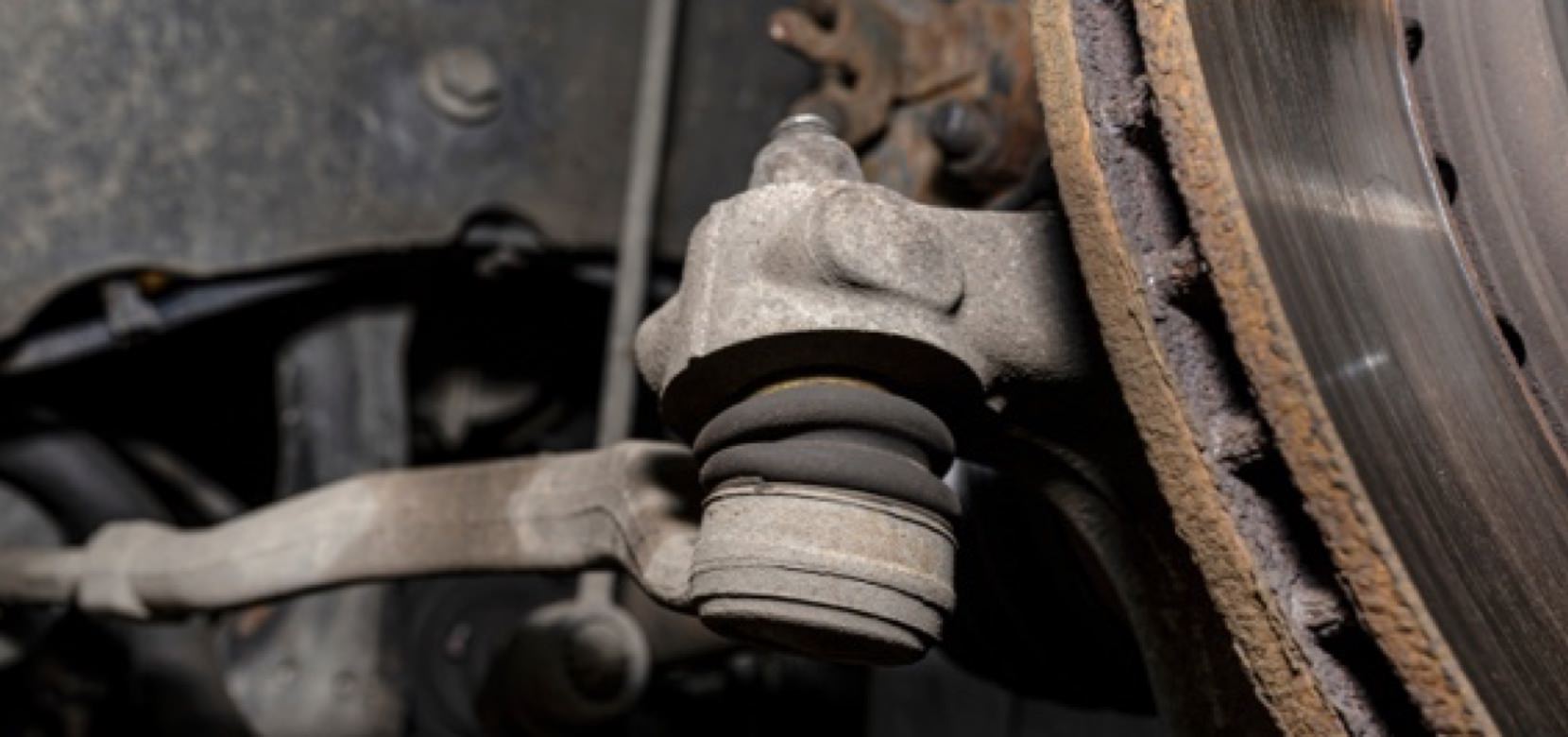
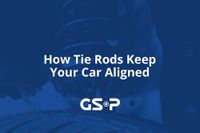
Without tie rods, your wheels would not respond properly to steering input, making it nearly impossible to drive safely. At GSP North America, we believe drivers should understand how tie rods work, what happens when they fail, and why timely replacement is critical for safety.What Are Tie ...
When it comes to steering and alignment, tie rods are one of the most important yet underappreciated parts of your vehicle. Without tie rods, your wheels would not respond properly to steering input, making it nearly impossible to drive safely. At GSP North America, we believe drivers should understand how tie rods work, what happens when they fail, and why timely replacement is critical for safety.What Are Tie Rods?Tie rods are durable steel rods that connect the steering rack to the steering kKnocking or clunking noises when turning the steering wheel can also indicate looseness in the tie rods. The vehicle may pull to one side while driving, or the steering wheel itself may vibrate excessively. These symptoms should never be ignored, as they point to components that are wearing down. Driving with worn or failing tie rods is extremely dangerous.At GSP North America, we engineer replacement tie rods with the strength and precision needed to keep vehicles aligned and reliable. Explore our product lineup today to find the right tie rods for your next repair. ... CV Axle vs. Driveshaft: What’s the Difference (and Which One Is Failing)?If a tie rod fails completely, it can disconnect the steering linkage from the wheel, causing the driver to lose control of the vehicle.
Hi, so my friends and I used rit dye to tie dye some shirts, but we didn’t realize we were supposed to water down the dye. I just now realized it…
Posted by u/No-Razzmatazz-817 - 4 votes and 5 commentsHi, so my friends and I used rit dye to tie dye some shirts, but we didn’t realize we were supposed to water down the dye. I just now realized it while doing some research. It’s been a couple of hours, what do I do? I was going to let the shirts set overnight and wash in the morning, but should I go ahead and wash them?Unlike the procion mx dyes normally used for tie dye Rit dye REQUIRES heat to actually set the dye. It doesn't matter how long you leave it to sit and honestly with all purpose dyes like Rit there isn't any reason or benefit to letting it sit or batch after applying the dye.A place to share and discuss tie dye.

Loss of Steering Control: Without functional tie rods, the connection between the steering system and the wheels breaks down. This malfunction can cause you to lose control of your vehicle’s direction, a perilous situation if it occurs while driving. Uneven Tire Wear: Failed tie rods lead ...
Loss of Steering Control: Without functional tie rods, the connection between the steering system and the wheels breaks down. This malfunction can cause you to lose control of your vehicle’s direction, a perilous situation if it occurs while driving. Uneven Tire Wear: Failed tie rods lead to poor wheel alignment.Costly Repairs: Ignoring the early signs of tie rod failure, such as steering wheel vibration or uneven tire wear, can escalate into more significant damages within the steering system, leading to expensive repairs.When you inspect the tie rods, look for signs of wear or damage, such as uneven tire wear or a loose steering wheel, which could indicate that a replacement is necessary. It’s wise to have new tie rod ends on hand, so you’re prepared in case of sudden failure.Don’t overlook the critical role of tie rods in your vehicle’s steering system. Ignoring signs of wear—uneven tire patterns, unsettling knocks—risks catastrophic failure, jeopardizing your control and safety.
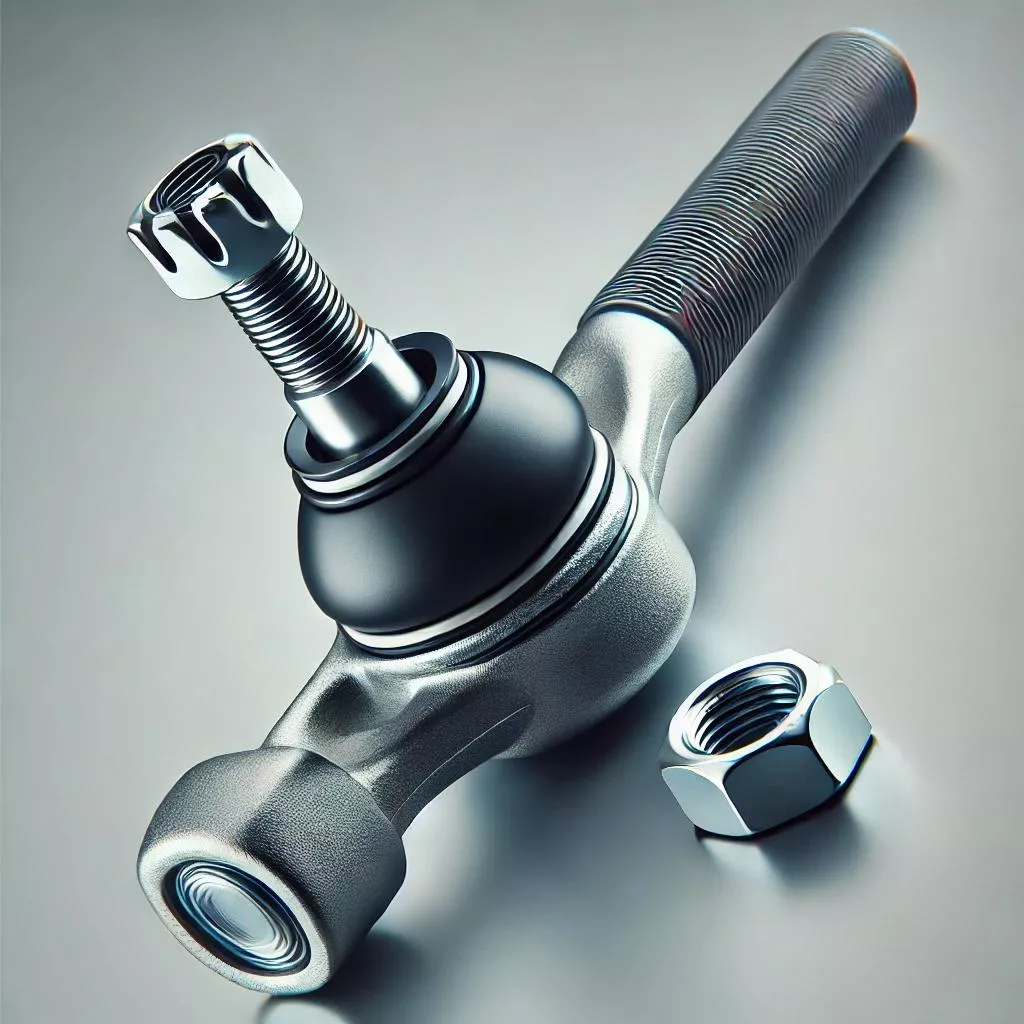

Learn common tie-dye problems and solutions, from muddy colors to faded results
Ah, tie-dye. It's often hailed as a carefree, "no-mistakes-just-happy-accidents" craft. And while it's true that the beauty of tie-dye often lies in its spontaneous, unpredictable nature, let's be honest: sometimes, those "happy accidents" can feel a lot like outright tie-dye fails.But here's the good news: a tie-dye "fail" doesn't have to mean the end of your garment or your enthusiasm. More often than not, there are effective strategies to salvage, fix, or even cleverly repurpose those less-than-perfect creations. This comprehensive guide will help you diagnose common tie-dye problems, offer actionable solutions, and provide valuable insights to ensure your next tie-dye project is a dazzling success.Dye not penetrating: The dye solution might not have reached the very center of tightly tied folds. Air pockets: Trapped air within folds can prevent dye from reaching the fabric. Not enough liquid in dye bath (for immersion dyeing): If immersion dyeing, the fabric needs to be fully submerged and agitated. This is a less common "fail" but can occur, especially with reverse tie-dye.Gift It: What you see as a "fail" someone else might see as perfectly unique and charming. Offer it to a friend or family member who appreciates handmade items. Repurpose as a Cleaning Cloth/Rag: For truly beyond-repair messes, repurpose the fabric for household chores. ... Quilting: If parts of the fabric have good areas, cut them out and use them for a tie-dye quilt or patchwork project.
Is your inner tie rod failing? Learn how to diagnose worn tie rods, spot dangerous symptoms, and replace them with track-ready parts built to handle real abuse.
If you're burning through tires and can’t keep an alignment dialed in, check the inner tie rods. A failing inner tie rod can cause the steering wheel to pull to one side — or feel like it won’t stay centered.Steering feel is everything — especially in drifting and performance driving. And when your inner tie rod starts to fail, you’ll notice fast. Sloppy turn-in, clunking sounds, or wandering on the highway?Hear a clunk or clicking noise when turning the wheel? That’s often the ball-and-socket joint inside the inner tie rod failing.The most obvious sign of a worn inner tie rod is steering play.

The outer tie rod has a ball joint ... vehicle goes over uneven terrain. The most common failure point of the tie rod end is the ball joint which wears out leading to various problems....
The outer tie rod has a ball joint on the steering knuckle connection side which is essential for steering knuckle articulation with respect to suspension movement as the vehicle goes over uneven terrain. The most common failure point of the tie rod end is the ball joint which wears out leading to various problems.The ability to turn your front wheels is all down to the tie rod ends which makes them an absolutely crucial part of the steering system. This is why it is important to ensure the tie rod ends work perfectly and actively address any issues before the problem proliferates. By knowing the symptoms of tie rod end failure you can identify issues with the component and replace it immediately.As the tie rod end begins to fail, it starts to shows signs of failure which can range from complete loss of vehicle control to premature tire wear. If you experience these symptoms then make sure you replace the tie rod ends as soon as possible to prevent damage to other suspension and steering components as well as risking safety.As the ball joint within the tie rods fails, clearances between the ball joint components increase and that creates clunking or squealing noises when the wheels are turned. The ball joints can be inspected to determine their condition. Ripped ball joint boots can introduce contaminants and moisture into the ball joint which increases friction and corrosion within the ball joint leading to failure.
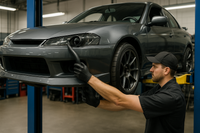
Is your inner tie rod failing? Learn how to diagnose worn tie rods, spot dangerous symptoms, and replace them with track-ready parts built to handle real abuse.
If you're burning through tires and can’t keep an alignment dialed in, check the inner tie rods. A failing inner tie rod can cause the steering wheel to pull to one side — or feel like it won’t stay centered.Steering feel is everything — especially in drifting and performance driving. And when your inner tie rod starts to fail, you’ll notice fast. Sloppy turn-in, clunking sounds, or wandering on the highway?Hear a clunk or clicking noise when turning the wheel? That’s often the ball-and-socket joint inside the inner tie rod failing.The most obvious sign of a worn inner tie rod is steering play.

The best local & breaking news source in the US, featuring local weather, alerts, deals, events and more.
Funny Fails shorts funny fails virals · adamgoodl · 65 ·
10 votes, 13 comments. 59K subscribers in the tiedye community. A place to share and discuss tie dye.
I sprinkle the powder over my tied up shirt and then pour hot water over it. You can see the color change almost immediately ... Yep! 100% cotton. I only bought the bleach a day ago. It’s was domestos thick bleach ... Could have been too much water. I've found that with certain bleaches, too much water dilutes it too much to give the desired result. I use bleach toilet gel now and it works so much better! ... You don't dilute the toilet gel? I've had many failed reverse dyes so if toilet gel in the answer then I'm gonna go buy some today 😂Posted by u/MetrologyGuy - 10 votes and 13 comments


While both ball joints and tie rods are critical components in a car’s suspension and steering system, their structure, location, and function differ significantly. Both failing tie rods and ball joints can cause steering problems, noise, and irregular tire wear, but their symptoms vary slightly.
Do tie rods and ball joints wear out at the same time?+ They don’t usually fail in sync. Ball joints bear vertical loads and tend to wear from bumps and impacts, while tie rod ends take the lateral steering forces.Better NOT! Driving on worn tie rods and ball joints can wreck your steering stability, throw off your alignment, and even risk a suspension failure.Compare ball joints and tie rods in your car’s suspension and steering systems—learn their functions, failure signs, check tips, and when to replace each component.Each tie rod assembly combines an inner tie rod (Tie Rod End) and outer tie rod (Rack End) by an adjustable sleeve. When you turn the wheel, it pushes or pulls the steering knuckle to pivot your wheels left or right. So what does a tie rod do on a car?

Things got messy at the brand known for trendy trucker hats.
Find out how it all went down in Episode 49 of The Great Fail.Debra Chen is an award-winning producer and host of The Great Fail, which examines the rise and fall of iconic brands and companies to garner lessons for executives in leadership positions.The Great Fail: How Phar-Mor Went From Saving to Misbehaving
Dye not penetrating: The dye solution might not have reached the very center of tightly tied folds. Air pockets: Trapped air within folds can prevent dye from reaching the fabric. Not enough liquid in dye bath (for immersion dyeing): If immersion dyeing, the fabric needs to be fully submerged ...
Ah, tie-dye. It's often hailed as a carefree, "no-mistakes-just-happy-accidents" craft. And while it's true that the beauty of tie-dye often lies in its spontaneous, unpredictable nature, let's be honest: sometimes, those "happy accidents" can feel a lot like outright tie-dye fails.But here's the good news: a tie-dye "fail" doesn't have to mean the end of your garment or your enthusiasm. More often than not, there are effective strategies to salvage, fix, or even cleverly repurpose those less-than-perfect creations. This comprehensive guide will help you diagnose common tie-dye problems, offer actionable solutions, and provide valuable insights to ensure your next tie-dye project is a dazzling success.Dye not penetrating: The dye solution might not have reached the very center of tightly tied folds. Air pockets: Trapped air within folds can prevent dye from reaching the fabric. Not enough liquid in dye bath (for immersion dyeing): If immersion dyeing, the fabric needs to be fully submerged and agitated. This is a less common "fail" but can occur, especially with reverse tie-dye.Gift It: What you see as a "fail" someone else might see as perfectly unique and charming. Offer it to a friend or family member who appreciates handmade items. Repurpose as a Cleaning Cloth/Rag: For truly beyond-repair messes, repurpose the fabric for household chores. ... Quilting: If parts of the fabric have good areas, cut them out and use them for a tie-dye quilt or patchwork project.

Under Robert’s Rules of Order, it takes a majority of votes cast (more than half) to pass a motion. Abstentions are not counted. In this situation, two votes are cast. One votes in favor, one against. One is not a majority of two. The motion is not approved, and no action has been taken. It is ...
Under Robert’s Rules of Order, it takes a majority of votes cast (more than half) to pass a motion. Abstentions are not counted. In this situation, two votes are cast. One votes in favor, one against. One is not a majority of two. The motion is not approved, and no action has been taken. It is a tie vote, and it fails.A TIE VOTE FAILS!What happens when a vote is tied? Here are a few angles to this question.If there is a tie, the chair can vote to BREAK THE TIE.

Wall ties are an essential—but ... deteriorated over time or been poorly installed in the first place. This leads to a phenomenon known as wall tie failure, where the ties no longer effectively perform their function....
Wall ties are an essential—but often hidden—component that holds the external and internal leaves of a cavity wall together, ensuring structural stability and preventing issues like bulging or cracking. However, in many older properties, ties may have deteriorated over time or been poorly installed in the first place. This leads to a phenomenon known as wall tie failure, where the ties no longer effectively perform their function.Poor Original Installation Even if older ties were made from robust materials, they can fail prematurely if they were placed incorrectly—perhaps with the drip point buried in mortar or the orientation reversed.Structural Movement Subsidence, settlement, or repeated thermal expansion and contraction can stress older ties beyond their limits. Over time, repeated cyclical loading can cause micro-fractures and eventual failure.The expense of remedial tie work can vary widely based on factors like the property’s size, how many ties need replacing, and the ease of access to the walls. However, the cost is usually less than the potential consequences of ignoring tie failure, which could lead to partial collapses, major cracks, or the need for extensive rebuilding of the external leaf.

Normal wear and tear can cause a tie rod to fail; driving hazards like potholes and accidents can also cause damage to a tie rod. If a tie rod becomes damaged and fails, the effects can range from mild (premature tire wear) to extreme (loss of vehicle control).
Normal wear and tear can cause a tie rod to fail; driving hazards like potholes and accidents can also cause damage to a tie rod. If a tie rod becomes damaged and fails, the effects can range from mild (premature tire wear) to extreme (loss of vehicle control).Uneven Tire Wear A damaged tie rod can cause uneven or excessive tire wear. Do a visual inspection of your tires; if they display excessive wear on one side but not as much wear on the other side, it may be a sign of a failing tie rod. If the tire wear is even, that is a good indication that the tie rods are working properly.In addition, if the boot protecting the tie rod joint becomes damaged, dirt and debris can get in and make a grinding sound as you steer. If you’re hearing new sounds from the front of your vehicle, it’s time to check in with a qualified technician. If you experience any of the symptoms outlined above, it is imperative that you make an appointment with a qualified technician right away. Being able to steer correctly is key to the safe operation of your vehicle. A failing tie rod can make it difficult to control your vehicle, which can compromise your safety and the safety of your passengers.A critical component of your vehicle’s steering system, tie rods connect the steering rack to the steering knuckle. Tie rods not only help move your wheels when you steer but they make turning your vehicle possible.








